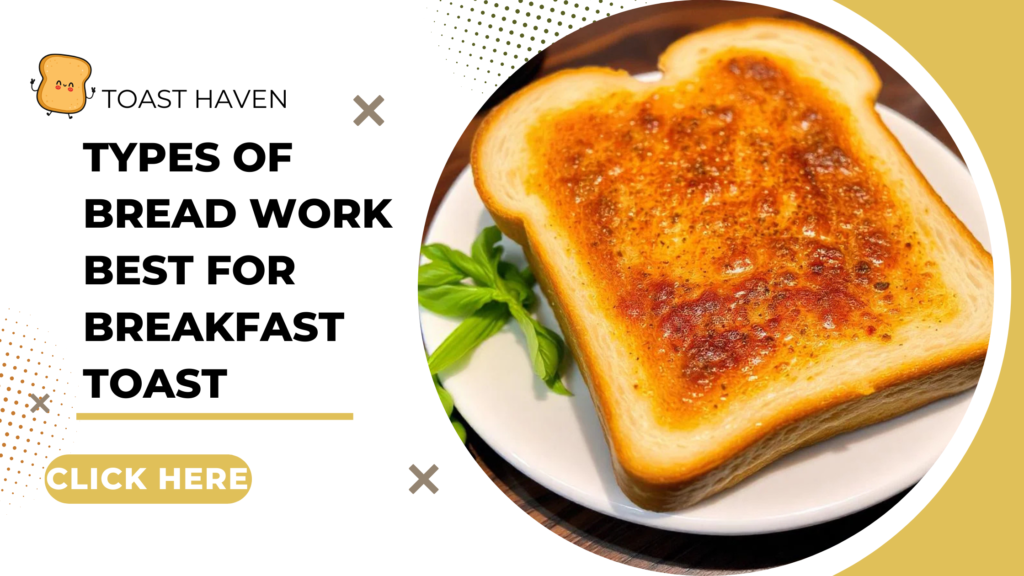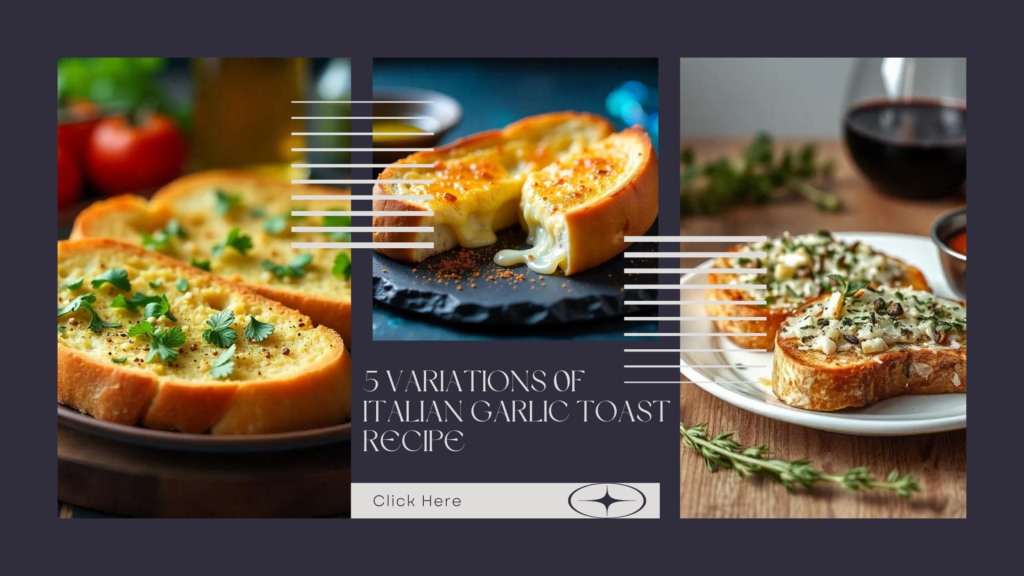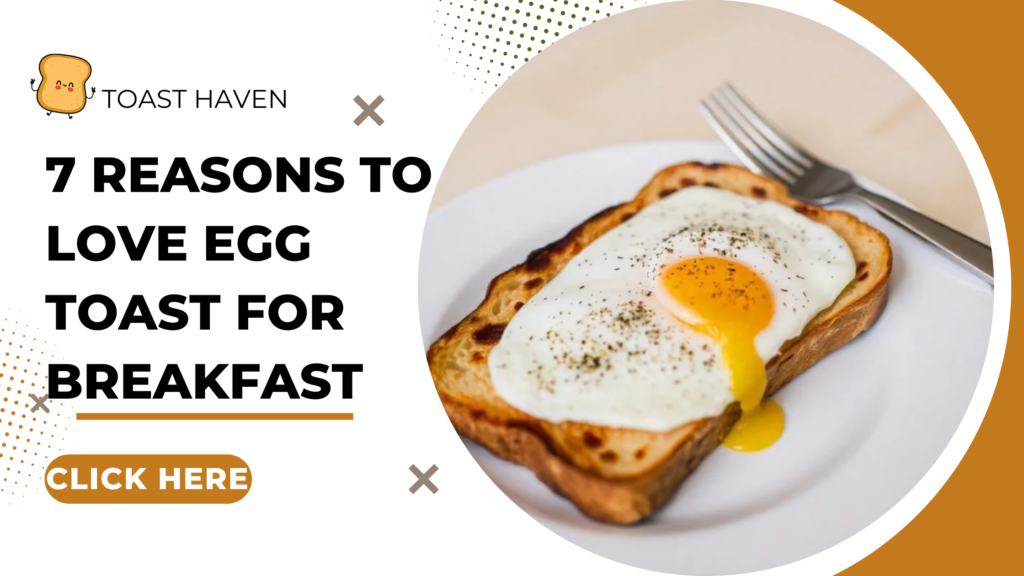Table of Contents
Introduction to Breakfast Toast and Its Popularity
Many people consider breakfast to be the most vital meal in the day and toast is the consolation in many homes around the world. From butter to jam, avocado, to eggs, or a combination of all or even alone, breakfast toast is easy, quick and filling. It is convenient and does not require more time in the morning, additionally, it leaves room for creativity when it comes to the additions of flavors and toppings. Speaking of breakfast toast, it is a possibility to add something for each person, each citizen, each gender, each age, each man, and each individual: and all of this usually differs – tastes, needs, and preferences.

This article focuses on the different types of bread that are suitable for toasting, the strengths and weaknesses of each type, the things one needs to consider when selecting the toast bread as well as some recipes and toppings on how one can maximize the breakfast toast. In addition for those who wish to bake something different from conventional breads, we shall consider recipes that can be of value in breaking the monotony in the morning bread-eating ritual. Depending on whether one is looking for the most nutritious bread for toasting or the most delicious one, then there is nothing as special for every breakfast.
The Different Types of Bread Commonly Used for Breakfast Toast
White Bread
- White bread is one of the versatile types of bread suitable for toasting, it is soft, and light, and its taste is bland. Due to its neutral taste, it is often used for a sweet meal as well as a savory one; from butter and jam to scrambled eggs and avocados.
Whole Wheat Bread
- It has a grainy feel that is better than rice crispies, has a nutty taste that is perfect for our taste buds, and it has high fiber content as compared to the normal cereal hence good for breakfast for those who would wish to have a heavy breakfast.
Sourdough Bread
- Sourdough bread with its slightly acidic flavor is prepared with the help of natural yeast and lactic acid bacteria and via the process of fermentation. This bread is dense it has crisp edges and it has a firmer feel that allows it to complement very lean spreads and even gourmet finishes.
Rye Bread
Rye bread is a type of bread that is very dense, and dark in color, it has a very rich, slightly bitter taste. It’s particularly popular with heavier breakfast foods and works best with, toppings such as smoked salmon or cream cheese an omelette, or scrambled egg. But it must be mentioned that rye contains more fiber than white bread and may be useful for those who want to eat less frequently.
Multigrain Bread
Whole grain bread contains a variety of grains and seeds that make the bread crispy on the outer side and juicy on the inside while the Multigrain bread has a warm and earthy flavor. This bread is dense but delicious and the mixture of grains gives an assortment of nutrients that qualify this as perfect for breakfast toast.
Gluten-Free Bread
While it is true that many gluten-free products often have a dry and crumbly texture and are rather tasteless, there is still a range of high-quality gluten-free products that have a good taste and texture.
Brioche
That is why it is advisable to have it served with sweet toppings such as Nutella, fresh fruits, or honey; however, it is also appropriate for some deluxe rhubarb dishes such as French toast.
Check Out: 7 Reasons to Love Egg Toast for Breakfast
Pros and Cons of Each Kind of Bread for Breakfast Toast
- White Bread
- Pros: Soft, NSP, can be combined with different icings, humble price.
- Cons: Little fiber content, full of nutrients, causes an up-and-down effect on blood sugar levels.
- Whole Wheat Bread
- Pros: Rich in fiber and some nutrients than white bread, highly satisfying, low glycemic index.
- Cons: However, the increased density of the texture may not be preferred by everyone since it is way too close to the ground; the flavor is also a little bitter.
- Sourdough Bread
- Pros: Delicious sour taste, less bulk as it is fermented, and less content of gluten due to fermentation.
- Cons: Some can be more costly and rare it can be a challenge if one is making it at home.
- Rye Bread
- Pros: Rich in fiber, the feeling of satiety lasts a long time, with a rather specific taste, which is perfectly combined with a garnish.
- Cons: Closely kneaded and weighed, may not be to the liking of all, not easy to brown uniformly.
- Multigrain Bread
- Pros: Nutrient-dense, high in fiber, and possesses a blend of flavors.
- Cons: Can be dry or overly dense depending on the grain mix lower fiber foods, compared the what is cost more.
- Gluten-Free Bread
- Pros: Ideal for persons suffering from gluten intolerance or celiac disease, a wide range of products are offered.
- Cons: Many don’t have the real bread feel; it can be costly than normal bread; some may have additives to enhance the taste.
- Brioche
- Pros: Moisturising, delicious buttery taste, tender, good for sweets.
- Cons: Full of calories and sugars, should not be consumed if you’re on a diet or looking for a low-calorie diet.
Factors to Consider

- Nutritional Value: If you have a preference for health eat breakfast bread that has fiber, whole grain, or nutrient-rich one such as multigrain or whole wheat bread is the best sort. These breads can satisfy you for a longer time of your morning and deliver a constant boost of energy.
- Texture and Toasting: Some prefer their toast to be crispy while others feel that it should be soft. Sourdough and white type of bread easily turn crispy on the outside although whole wheat and rye types will remain thicker even when toasted. Consider how you prefer your toast to be when choosing the bread that you want to eat.
- Flavor Profile: For those who like strong-tasting bread there is good information: rye or sourdough bread is even more tasteful. If you prefer a neutrality between which your ingredients stand out, then you should not go beyond white or wholemeal breads.
- Dietary Restrictions: But for those who have celiac disease or gluten intolerance, gluten-free bread is a must-have in the kitchen while for those; who want to loosen up on the amount of gluten they take, it is very handy. Brioche dough can be made healthy but, depending on the ingredients, brioche might not really be for the calorie or sugar-conscientious personage.
- Availability and Cost: Not all bread is readily available in all areas of the world and some such as brioche or good quality sourdoughs can be very costly. When one is thinking of the economical option of baking, he or she might go for the regular white or wholemeal bread.
Recipes and Topping Ideas for Each Type of Bread
- Whole Wheat Bread: With a knife, spread peanut butter or almond butter on top, and for a fiber-filled, breakfast that you can power through, try slicing bananas. For the palate of a turkey lover, top the entire mix with mashed avocado, cherry tomatoes, and a pinch of chili flakes.
- Sourdough Bread: It`s quite acidic to enhance the taste when taken with mashed avocado, lemon juice, and sea salt. An even healthier approach, which is more appetizing might be to spread ricotta cheese on top and then drizzle with honey.
- Rye Bread: Smoked salmon with cream cheese with a touch of fresh dill nicely goes along with the strong profile of Rye bread. For something even less complicated, take butter and then place slices of radishes along with sea salt on top.
- Multigrain Bread: Grill it and top with Greek yogurt fresh berries and honey for a healthy start to the day’s meals packed with protein.
- Gluten-Free Bread: This can be eaten with mashed avocados or with a dairy-free spread with an egg or tomatoes each. If you want to indulge yourself in something more carbohydrate, you can try almond butter and chia seed jam.
- Brioche: French toast can be made using brioche slices: dip it in the mixture of eggs, milk, and cinnamon then fry it up golden brown. It is best topped with fresh berries and syrup to enhance its delicious taste.
Alternatives to Traditional Bread for Breakfast Toast
- Sweet Potato Toast: Some of the parts of sweet potatoes can be boiled, roasted, baked, or toasted and they can also be used instead of bread.
- Rice Cakes: These cut the calorie content but they may not fill you up like other foods would.
- Corn Tortillas: Lightly toasted corn tortillas can serve as a gluten-free alternative. Top with scrambled eggs, beans, or avocado for a Mexican-inspired breakfast.
Conclusion: Finding the Perfect Bread for Your Breakfast Toast Needs
Breakfast toast and the type of bread to be used can be defined by so many factors these include; the consumer’s preference, nutrition requirements, and taste buds. Whether you resolve to start your day with a slice of white bread multigrain bread or the sharpness of sourdough bread there is bread that will perfectly complement your morning regimen. It is recommended to try different types of breads and toppings to try and come up with a combination that enhances the appearance and appeal, nutritional value, and satisfaction of the breakfast meal. But sometimes, it’s good to go unconventional in terms of what you are using instead of bread especially if you have health requirements.
For more info: Click Here.
FAQs of Breakfast Toast
What is the healthiest bread option for breakfast toast?
Each bread contributes towards the daily requirement of fibers and LOADS of important nutrients and is relatively low GI. These pieces of bread are more powerful by supplying continuous energy and they’re beneficial for the digestive system.
Which bread is best for sweet toppings?
The soft bread texture and the mildly sweet flavor make brioche perfect for toppings such as fruits, Nutella, or honey.



